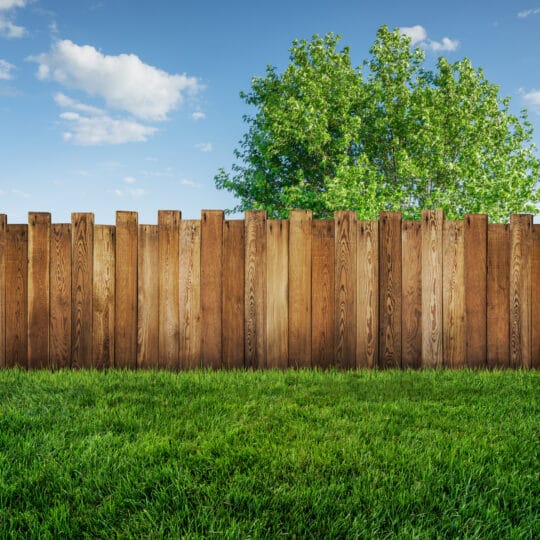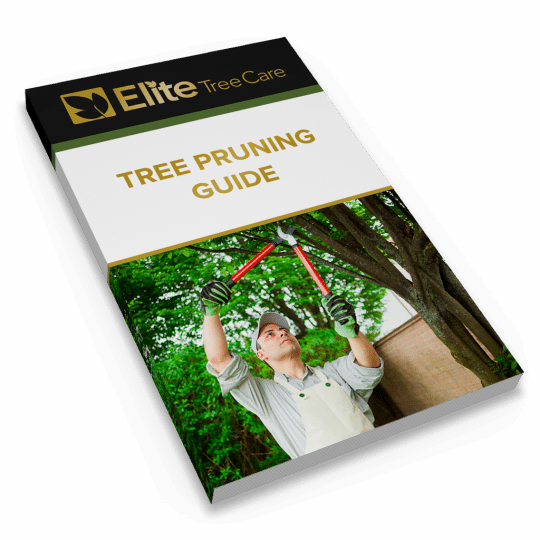Determining Tree Pruning Liability
From Property Lines to Professional Services
Posted
August 11, 2022

How close are you to your neighbor? While it’s nice if you get along, for these purposes we’re discussing the proximity of trees to property lines. If there’s a tree on your property that needs work, it’s also important to know who’s liable if an issue arises during this particular project. Learn how to determine professional tree pruning liability between your neighbors and the tree company you choose to work with.
Is the Tree Your Responsibility?
Sometimes it’s easy to tell if a tree is on your property. Even if you weren’t the one who planted it, if the trunk stands within your property lines, it’s your responsibility to care for it and address any issues that may arise.
However, there are times when the lines are skewed. For instance, a tree may have been planted at the property line but has since grown to spread across it. Or, a trunk is mostly on one side, but the tree leans the other way and branches span across two properties. Who is liable then?
Typically a tree trunk is the property line indicator. If it’s rooted in your yard, it’s your tree. If those roots and branches spread into your neighbor’s yard, and it starts to cause issues, they have the right to bring it up to you and suggest work needs to be done. But they can’t technically force you unless it’s causing structural damage.
The neighborly thing to do would be to discuss it together and come up with a joint solution. If this isn’t likely to happen, you have several options:
- Consult with an arborist and decide for yourself whether or not the tree should be pruned or come down.
- Ignore the problem and hope no damage is done. If damage is done, and your neighbor has brought up the issue before, they could decide to sue.
If a situation arises, the first thing to do would be to talk to your neighbor and try to work it out. Then discuss a plan of action with a certified arborist. If it comes to it, you may also want to review your state and local laws on property liability. Check your homeowner’s insurance to see what it covers as well.
Determining Professional Tree Pruning Liability
Once it’s been decided that the tree is yours and work needs to be done, there are still liability issues to clear up. Tree work is dangerous, especially in certain situations like working with a large tree close to power lines or your home. Accidents can happen, even if you hire experienced professionals. Make sure everyone is covered in case of emergency. Here’s how.
- Verify credentials. When you’re researching tree companies, you want to make sure they’re certified in your area for the certain type of work they’ll be doing. This means commercial or residential, city or suburbs, and whether they need to climb the tree or use a crane.
- Proof of insurance. Make sure they have up-to-date liability and worker’s comp insurance. Both are important to cover your home, their equipment, and their workers. If one is missing, it could come down to you to cover the costs of damage or injury.
- Read reviews. Get an idea of what you’re getting into by hearing what other people have experienced. The jobs may not be the same, but people may have commented on the work ethic, professionalism, and results.
- Signed contracts. Get your entire project in writing, including costs, dates, and job descriptions. Make sure everything you’ve discussed, including the method of removal, cleanup, and any additional services like stump removal is covered in the contract and signed by both parties.
Once everything is confirmed and in writing, you can rest assured you’re covered should anything unexpected happen.
Common Liability Oversights
Now that you’re covered where the tree is concerned, you also want to make sure there are no other hazards to getting the job done. Insurance may only cover what’s directly involved with removing the tree, including their equipment and any surrounding structures. But you don’t want to ignore other possible hazards such as an uneven sidewalk, loose steps leading to the job site, or other potential problems on your property. If these issues can’t get fixed before the work is to be done, you want to make sure to warn the contractors and even get it noted in the contract so it’s all in writing.
When they’re on your property doing the work, you also want to keep your distance. Being too close could result in injury that’s not covered. Constantly commenting on their performance can also result in costly distractions. Trust in the professionals you’ve researched and hired for the job.
Once you’ve done the work to determine liability for tree pruning and/or removal, consult with a professional company you can trust to lead you through the process. Contact Elite Tree Care to discuss your options for a tree on your property. Be a good neighbor by prioritizing tree care.

Download Your FREE Tree Pruning Guide
Learn how, when, and how much to trim or prune your trees to maximize their health and beauty. This guide covers the factors that go into tree trimming (pruning) and will help you make a more informed decision about hiring a professional tree service.